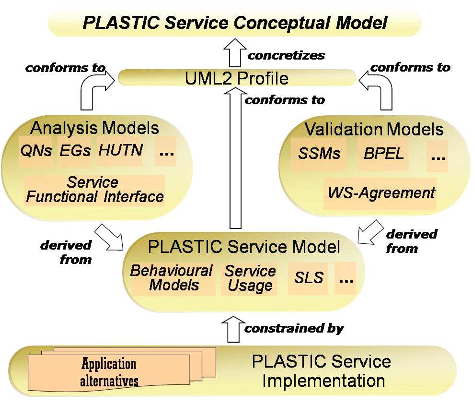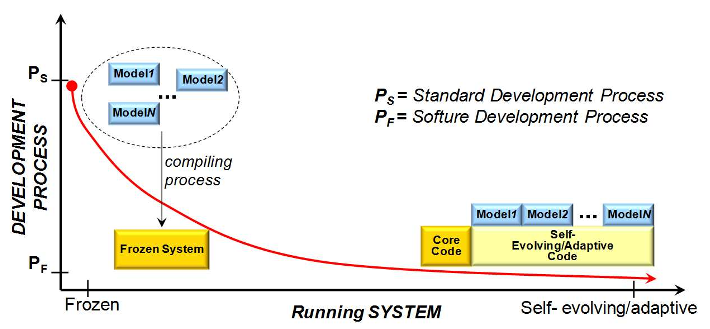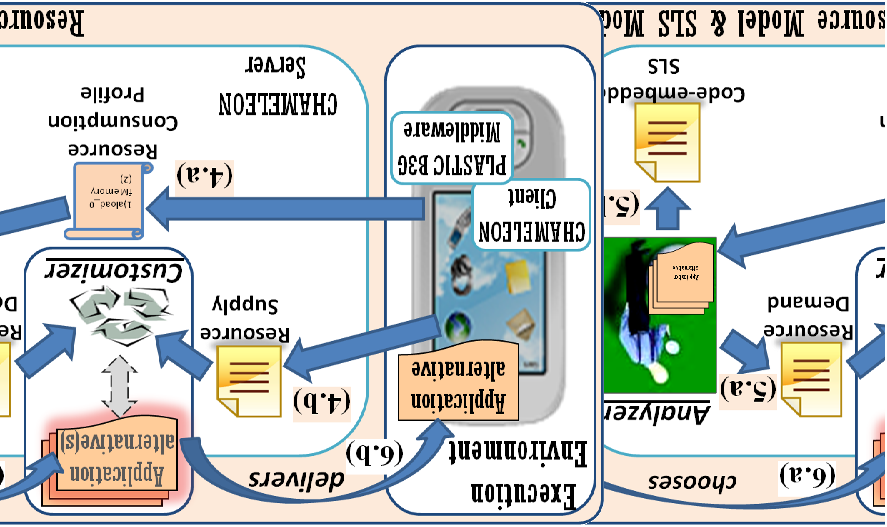




Did you find this useful? Give us your feedback






















11 citations
7 citations
...In summary, we can conclude that currently there is not any effective method able to evaluate the adaptivity of a software system [27][28] [29][30][31][32][33][34][35][36] – not even when we refer to this property not in the wider sense, but focusing on a concrete feature....
[...]
...[35] User-level Quality of Service (QoS) (Context awareness) / PLASTIC, model PFM / Pervasive Networking Environment Performance evaluation...
[...]
75 citations
69 citations
68 citations
...Adaptable components are implemented by using Chameleon, a formal framework for adaptive Java applications [5, 6, 31, 7]....
[...]
...This is done by using the Chameleon Development Environment (and hence the Chameleon Programming Model) we are going to present....
[...]
...PLASTIC services are implemented by using the Chameleon Programming Model [5, 6, 31, 7] that, extending the Java language, permits developers to implement services in terms of generic code....
[...]
...A detailed description of the Chameleon framework can be found in [5, 6, 31, 7]....
[...]
...However other dimensions of contexts can exist relevant to the user, system and physical domains, which are the main context domains identified in the literature [38, 9, 26, 7, 20, 40]....
[...]
67 citations
...Therefore, in the literature most approaches that try to deal with the validation of dynamic software system concentrate the changes to the structure by using graph and graph grammars formalisms or topological constraints [11, 23, 25, 30, 32, 39, 14, 22]....
[...]
59 citations
...Therefore, in the literature most approaches that try to deal with the validation of dynamic software system concentrate the changes to the structure by using graph and graph grammars formalisms or topological constraints [11, 23, 25, 30, 32, 39, 14, 22]....
[...]
In this paper the authors have discussed their thesis on software in the future.
Run time models, languages and methodologies will play a key role in achieving adaptability and dependability for future software applications.
The last phase of the development process focuses on the code derivation of the resource-aware adaptable components implementing the modeled eHealth service.
PLASTIC provides a set of tools1 that are all based on the PLASTIC Service Conceptual Model2 and support the service life cycle, from design to implementation to validation to execution.
If the functionalities of two networked systems match and, hence, the two networked systems perform complementary functionalities, then they can interoperate via a suitable mediating connector.
Softure will need to cope with variability, as software systems get deployed on an increasingly large diversity of computing platforms and operates in different execution environments.
It is worth noting that, due to a higher percentage of models managed at run time, in CONNECT the efficiency of the dynamic model-based analysis is more crucial.
Design, Validation, and Evolution activities vary depending on the organization and the type of system being developed.
also in CONNECT, managing models at run time during the (synthesis) process is a key aspect and models play a key role insynthesizing the connector behavior and in validating that, through it, the desired system dependability is achieved.
The efficacy of integrating and composing networked systems is proportional to the level of interoperability of the systems’ respective underlying technologies.
The first one, that the authors will describe in detail, concerns the IST PLASTIC [36] project that can be considered as a specific instance of Softure as context-aware software for next generation networking environments.
According to the requirements summarized above, an alarm can be managed by the hospital (with a probability of 0.7 as specified by the non-functional annotation PAprob borrowed from the UML SPT Profile3).